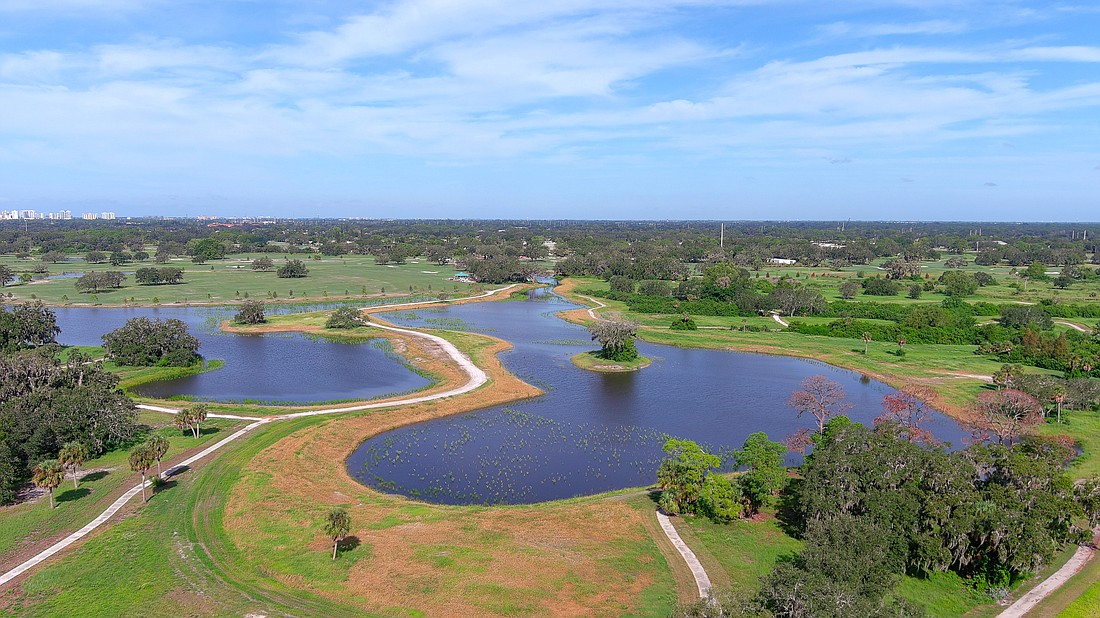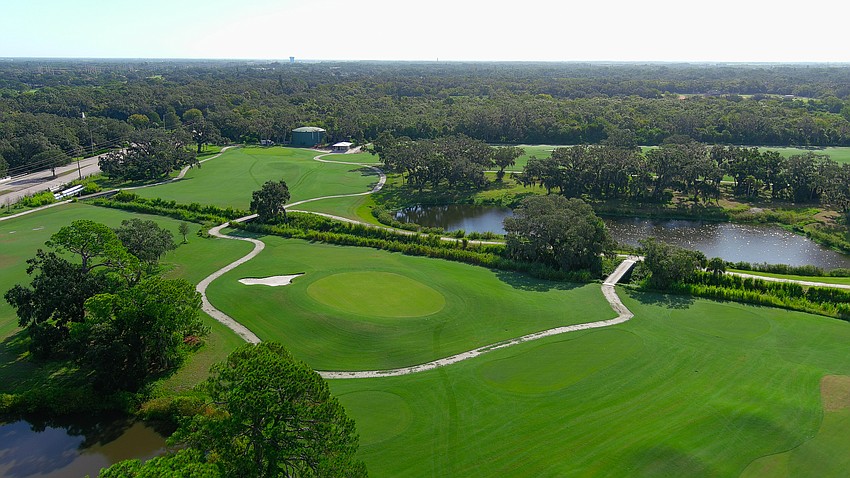- July 26, 2024
-
-
Loading

Loading

Even before it opens, the Bobby Jones Golf Club and Nature Park is being recognized for its environmental sustainability achievements.
Richard Mandell is among nine golf course architects to receive the 2023 American Society of Golf Course Architects Environmental Excellence Award, all cited for their work in addressing unique environmental challenges.
Introduced in 2019, the Environmental Excellence Awards program recognizes innovative work done at golf facilities to address environmental needs. The submissions were reviewed by a panel of golf industry and environmental leaders, including representatives of GEO Foundation, Golf Course Superintendents Association of America and National Golf Course Owners Association.

“The idea of flood retention/detention for Bobby Jones was outlined in our very first concepts for the project back in 2017, anchored by a proposed man-made wetland running throughout the property,” Mandell said. “It was great to see it hold up throughout the design and construction process and continually embraced by so many, which this wouldn’t have been possible without their input and implementation. Thanks go out to city of Sarasota officials and staff as well as the teams at Kimley-Horn, QGS Development and Troon/Indigo Golf, headed by Superintendent Ian Murphy and his expert staff.”
Bobby Jones and Mandell are recognized among a cohort of golf course projects from coast to coast and Costa Rica. Of Bobby Jones, the ASGCA wrote:
“The Donald Ross-designed course has had drainage issues with low-lying areas and canals for nearly 100 years. City runoff entered the property, making the site consistently vulnerable to upstream flooding. The solution included new canals shown on the (Donald) Ross plan that connected a 21.92-acre created wetland east of the course to existing canals running through the property.
“A weir was installed along the primary canal to divert water back into the course if flood waters rise, providing detention rather than flooding downstream properties. The system essentially transfers water in both directions as needed to control water quantity for the golf course and the city as needed.”
Originally planned as a renovation of the 36 holes covering the entire property, the project was scaled back to the original 18 holes designed by the legendary Donald Ross in 1926. Instead of golf course, the remainder of the site would become a nature park, providing an opportunity for Mandell to create harmonic synergy between golf course, wetlands and nature preserve.

The 22 acres of wetlands accepts water from what was a flood-prone site, as well as from points north, cleansing it through natural filtration before continuing on its path to Sarasota Bay. Dry hollows throughout the golf course provide short-term holding for occasional heavy rainfall that previously flooded the course.
The property serves as a watershed for 5,800 urban acres from as far north as University Parkway. Installed on the property were 49,000 nutrient-filtering aquatic plants to clean stormwater and filter pollutants.
“It's an unusual pairing because golf courses often get a bad rap because of the chemicals they use,” said retired Sarasota General Manager of Parks and Recreation Sue Martin, who is working with the city as a contractor at least until the golf course reopens on Dec. 15. “We use all natural materials now, and it is wonderful that we can use that property to cleanse the water that comes through it. It’s making a huge environmental impact, which is a wonderful thing.”
Prior to the renovation, it could take days for water to recede from the golf course, which is located on flat land below flood level. Incorporating modern water management techniques including swales and mounding, and installing more robust drain lines during construction, will allow overflow to stand in non-playing areas briefly before being expelled into the wetland.
“The flooding that we experienced when it was operating was because it was intentionally built the way to draw the water away from the houses around the golf course,” Martin said. “At the time the ability to put the drainage in and filter the water like we can now was not thought about, so we're still going to be taking the water, but because it's coming to us through the canals it can back into the golf course, store it for a little bit and then send it on its way.”